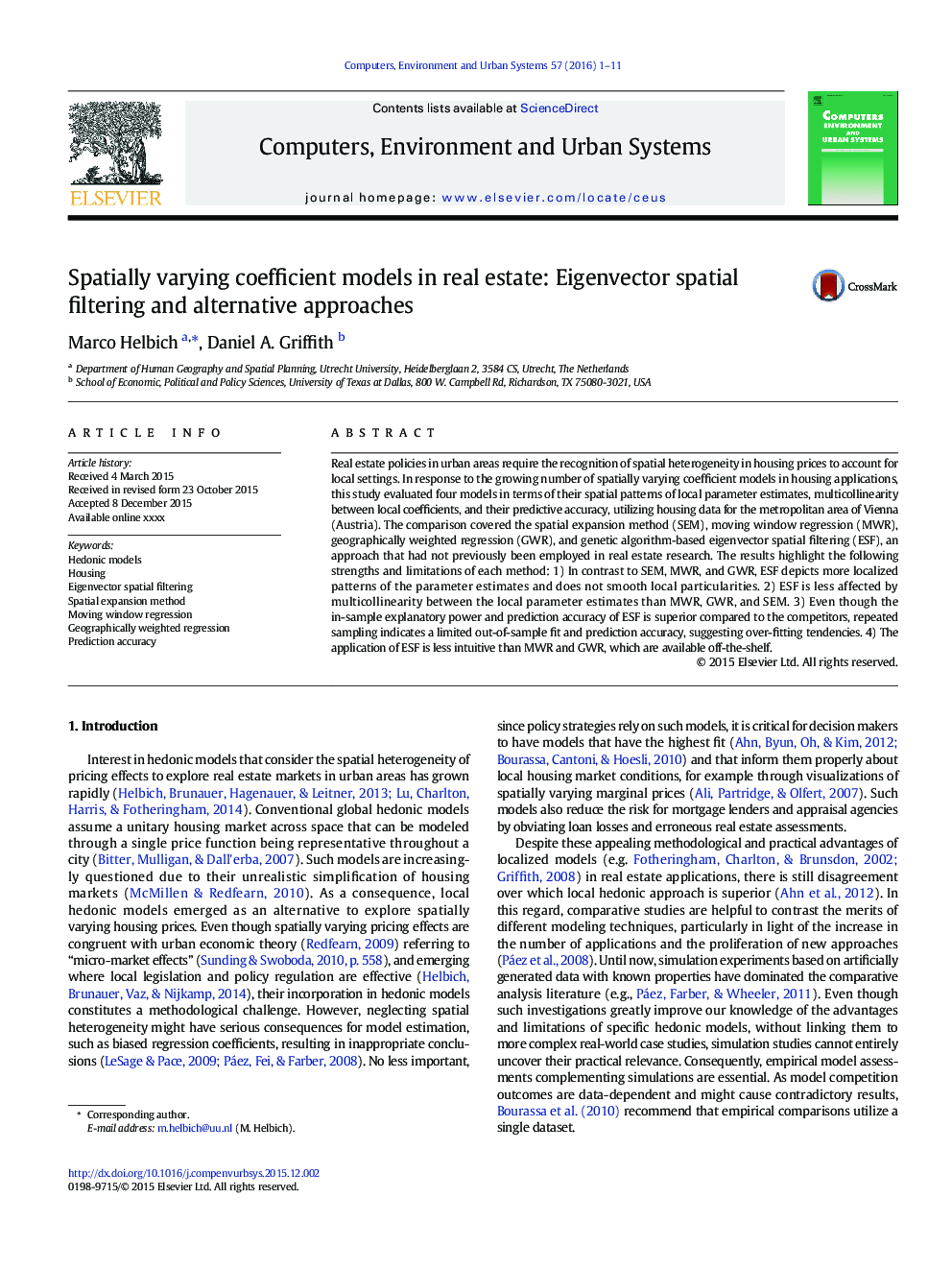| Article ID | Journal | Published Year | Pages | File Type |
|---|---|---|---|---|
| 6921895 | Computers, Environment and Urban Systems | 2016 | 11 Pages |
Abstract
Real estate policies in urban areas require the recognition of spatial heterogeneity in housing prices to account for local settings. In response to the growing number of spatially varying coefficient models in housing applications, this study evaluated four models in terms of their spatial patterns of local parameter estimates, multicollinearity between local coefficients, and their predictive accuracy, utilizing housing data for the metropolitan area of Vienna (Austria). The comparison covered the spatial expansion method (SEM), moving window regression (MWR), geographically weighted regression (GWR), and genetic algorithm-based eigenvector spatial filtering (ESF), an approach that had not previously been employed in real estate research. The results highlight the following strengths and limitations of each method: 1) In contrast to SEM, MWR, and GWR, ESF depicts more localized patterns of the parameter estimates and does not smooth local particularities. 2) ESF is less affected by multicollinearity between the local parameter estimates than MWR, GWR, and SEM. 3) Even though the in-sample explanatory power and prediction accuracy of ESF is superior compared to the competitors, repeated sampling indicates a limited out-of-sample fit and prediction accuracy, suggesting over-fitting tendencies. 4) The application of ESF is less intuitive than MWR and GWR, which are available off-the-shelf.
Related Topics
Physical Sciences and Engineering
Computer Science
Computer Science Applications
Authors
Marco Helbich, Daniel A. Griffith,
